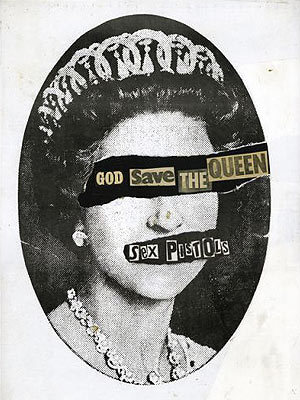
Reading Ben Street’s recent post Pop (and) Art, I started to consider links between music and art. It is easy to support Ben’s idea that the relationship between music and art was closest in the sixties, yet the music of the 60’s and 70’s seems to be a hot topic for contemporary art institutions today. Case in point, right now Malcolm McLaren is guest blogging about ArtBasel for “The Moment” on The New York Times. While art might not be comfortable with pop music, some curators are excited to draw on the nostalgia for rock and punk music of those bygone days.
Over the last year, there has been a wave of exhibitions that point to rock and punk music as inspiration for many artists’ practices. Double Album: Daniel Guzmán and Steven Shearer, currently on view at the New Museum, cites rock culture and male adolescence as strong influences on both artists. Music is a Better Noise, exhibited at PS1, looked at genre jumpers, “musicians who make art and artists who make music.” Panic Attack! Art in the Punk Years explored the “vibrant art scene that emerged during these [punk] years,” at the Barbican; it included works by Art21 artists Barbara Kruger (Season 1), Raymond Pettibon (Season 2), and Jenny Holzer (Season 4).
It is Sympathy for the Devil: Art and Rock and Roll Since 1967 that seems to be receiving the most press and perhaps the most scorn. The exhibition features work by Raymond Pettibon (Season 2), Mike Kelley (Season 3), and Laurie Anderson (Season 1) is currently on view at the Museum of Contemporary Art, North Miami. Sympathy for the Devil is described as “the most serious and comprehensive look at the intimate and inspired relationship between the visual arts and rock-and-roll culture to date.” This assertion is troubling considering omissions of influential musicians like George Clinton & Parliament Funkadelic, Sun Ra, and Bad Brains which makes me wonder, would rock-and-culture exist without black culture?
Considering this trend of rock and punk influenced exhibitions, I am left with a question posed by critic Pedro Velez in his artnet review of Sympathy for the Devil, “How do you tame counterculture into the prepackaged pretext of High Art?” Responses welcomed.




Pingback: 2008 August 23 | Art21 Blog
Pingback: Obama Special, Part 1 | Art21 Blog
Pingback: Hot Topic The New Antioch Teen Apparel Shop | Antioch Grove
Pingback: Hot Topic The New Antioch Teen Apparel Shop | Brentwood Grove
Pingback: Hot Topic The Hip Teen Apparel Shop | Quincy Cove
Pingback: Visual & Industry Examples for my Essay « MA GMI 2012